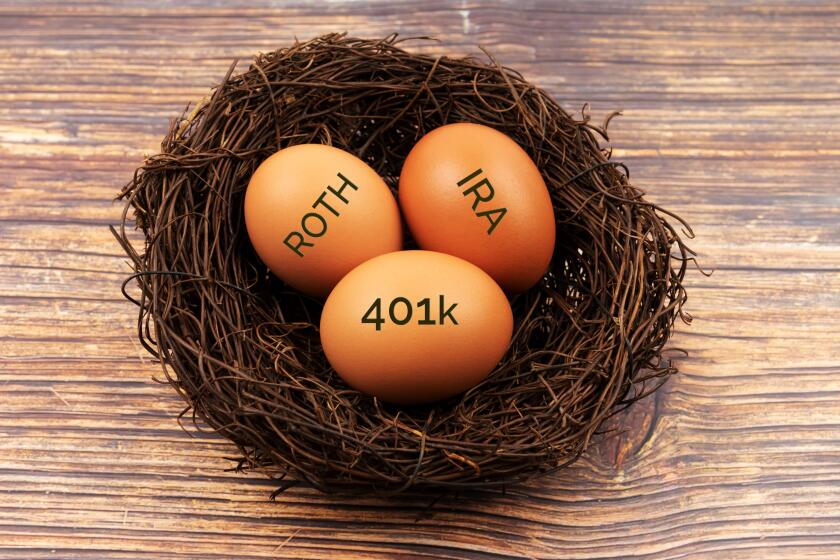When Holding Out Will Only Hurt
- Share via
Q: I own 173 shares of stock in the Parsons Corp. At the time I received it, as part of an employee stock ownership plan, it was paying a handsome dividend. The company went private about 10 years ago and offered holders $32 a share for their stock. I rejected the offer and kept the stock in the hope that it would return to the market and to paying dividends. I understand the company is again paying dividends. How can I get it to pay me dividends too? I think I am entitled to dividends going forward and all back dividends that were not paid--or at least stock equal in value to those unpaid dividends. What do you suggest?-- F.R.B .
*
A: What you want is impossible. The Parsons Corp. that is now paying shareholders dividends is an entirely different company from the one in which you held stock. The dividends being paid are for different shares from those you hold. In fact, the company whose shares you kept no longer exists.
What can you do now? Your choices are the same as they were when the company first issued its tender offer: accept $32 a share or continue to hold on to the stock. You are not entitled to past dividends or dividends from the new company. If you choose to tender your shares, you should contact Parsons Corp.’s new transfer agent: Chemical Bank, at 450 W. 33rd St., New York, NY 10001.
Unfortunately, your situation is far more common than it should be. With only exceedingly rare exceptions--perhaps only in the case of pending legal action--shareholders who refuse to turn in their shares in an uncontested tender offer harm only themselves.
Why would you want to hold on to them? Any dividends paid on the shares are suspended, and their tender value isn’t going to increase. In your case, you have lost the use of more than $5,500 for the past 10 years.
Forgotten U.S. Bonds Can Be Cashed In
Q: While rummaging around in my safe deposit box recently, I came across three $1,000 U.S. Savings Bonds my mother purchased for my three children. We had all forgotten about the bonds. How do I find out how much they are worth, and where do I go to redeem them? -- R.S .
*
A: Virtually all full-service banks redeem Series E and Series EE savings bonds. Your bank should also be able to show you a U.S. Treasury Department savings bond redemption table, which lists the current value of all outstanding bonds by their issue dates. You can also get a copy of the redemption table by sending a postcard with your request to Treasury Department, 200 3rd St., Parkersburg, WV 26101.
Although you didn’t ask, other readers may want to know that Series H and Series HH savings bonds can only be redeemed through the Federal Reserve. Mail them--safe journey is insured by the government--to the Federal Reserve Bank of Kansas City, P.O. Box 419440, Kansas City, Mo. 64141-6440.
Tracking Stock Value Through Merger Maze
Q: How can I figure out the purchase prices of some stock I own? These shares were purchased through payroll deductions over several years, but I do not know the exact dates. The company has merged with others and spun off divisions as entire companies, so I own shares of several different companies now.-- J.K.
*
A: There are services that will do the research you need, but before consulting one, let’s see what you can do for yourself. We hope you know, or can at least estimate, when and for how long you were enrolled in the stock purchase program.
Have you checked with your employer to see what payroll deduction records you can get? This is the first and most obvious choice. Another possible source of help might be your employer’s investor relations office. Its records should offer a detailed chronicle of the stock splits, mergers and spinoffs that will give you the initial value of the shares in the spun-off companies. Your local public library or stock brokerage also has reference materials such as Standard and Poor’s guides that can help you estimate the value of the shares purchased by payroll deductions. Even if you don’t know the exact dates of the purchases, if you know the years, you can pick a reasonable trading price for the shares in that period. (An average of the high and low prices in each quarter would probably pass muster with the Internal Revenue Service.)
The above steps, along with some careful calculations, should yield the results you want. Another solution, although not a preferred one, would be to determine how much money was withheld from your paycheck for the stock purchases and assign that as the taxable basis in your shares. Now, you must sell all your shares at once and deduct your basis from your proceeds. The remainder is your taxable gain. You should expect to have to write a detailed explanation of your calculations to the IRS and hope that agency accepts your calculations as reasonable. Otherwise, you could owe taxes on the full proceeds from selling the stock.
Or you can turn your case over to a stock search company that, for a fee, can try to reconstruct your portfolio’s evolution. Prudential-American Securities is one such company whose prices are considered among the lowest. It is at 921 E. Green St., Pasadena, CA 91106.
More to Read
Inside the business of entertainment
The Wide Shot brings you news, analysis and insights on everything from streaming wars to production — and what it all means for the future.
You may occasionally receive promotional content from the Los Angeles Times.









